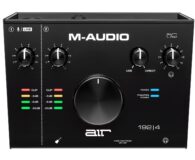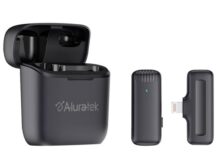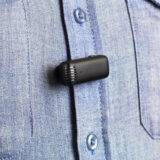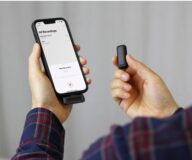
In today’s social media era, anyone with a laptop or smartphone is a content creator. More people are creating content and building a following online. If you are a content creator—or thinking of becoming one—you’ll need great audio. Viewers won’t watch your video or listen to your podcast if your audio is bad.
In this article, I’ll show you how you can take your content to the next level with better audio. I’ll discuss the microphones and accessories you’ll need for studio setups and on-location content production. Finally, I’ll give you tips and tricks to get better audio with the equipment you already have.
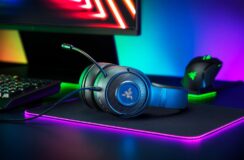
Audio for gaming and computer workstations
There are many ways to create video and audio content. A popular method for many creators is a dedicated studio workstation. This usually consists of a computer, webcam, and headphones. Often, those devices already have built-in microphones that creators can use. However, if you’re serious about your content, you should consider a dedicated microphone. The gaming community loves reactions, so making sure your audience can hear your commentary clearly is important.
If you’re just getting started, consider a computer microphone. These connect via USB to a computer and deliver professional-sounding microphone quality for any audio recording setup. They are also useful for video chatting and conferencing. It’s perfect for noisy rooms, as many computer microphone feature noise cancellation and unidirectional pickup. This means only noise in front of the microphone—your voice—gets amplified.
Audio solutions for studio-based workstations
Many established creators eventually work up to a dedicated studio setup for content creation. In addition to a computer workstation, they may also have a studio set with lights and multiple microphones for recording videos and podcasts with in-studio guests. If you would like to create your own studio setup, you’ll need a dedicated audio interface. This is a box with XLR microphone inputs and a built-in sound driver that connects to computers via USB. An audio interface is ideal if you’re planning to create content with guests because it allows for multiple microphones to connect to a single computer. Furthermore, each microphone features dedicated gain level dials that can manually be adjusted for better control when recording.
With an audio interface, you can connect both dynamic microphones and condenser microphones. To use condenser microphones, audio interfaces feature a 48V phantom power switch. This is a required DC power supply sent down the cable to power the microphone.
Improving audio for smartphone-based content
Most creators use their smartphone to create content. This can be in the form of vertical videos for social media, or horizontal videos for platforms like YouTube. Audio becomes a major issue when recording in noisy environments. The farther someone is away from the smartphone, the worse the audio gets. Thus, many creators are limited to just making selfie videos. The final audio quality ultimately depends on the kind of smartphone you have.
A better solution is to use wireless microphone options for smartphones. These are newer microphones where an adapter connects to your smartphone, and a microphone connects to your shirt. The signal is then transferred wirelessly from the microphone to the smartphone. The benefit here is that you can be farther away from the smartphone but still record clear audio. An included charging case ensures the microphone is powered and ready for use.
Another option is to use a separate digital audio recorder to capture audio. This is a separate device designed to capture audio onto an SD card. It can be used in the field for audio-only content or used in conjunction with smartphone videos. The only difference is you will have a separate video and audio file. The audio can later be synced to the video during the edit. The benefit of digital audio recorders is they feature multiple microphones and built-in effects like compression and limiting in a single device. This provides various recording modes such as 2-channel and 4-channel sound.
Hacks to get better audio for smartphone videos
High-end smartphones today provide amazing video content. However, as mentioned unless you’re close to the phone, good audio is a hit or miss. This is especially true in loud environments. There is a simple and easy hack for creators to use smartphones for video while still getting professional sounding audio. All you need is a friend and their smartphone.
First, have your friend use your phone to film you. Then, use the built-in recording app in your friend’s smartphone. Use it like a microphone by holding it upside down so you’re recording into the built-in mic. After hitting record on both smartphones, clap to make it easier to sync later.
Afterwards, have your friend send you the audio file. You will be surprised at how well the audio sounds. Plus, you can be far away from the smartphone video camera and still get good audio. The great thing here is that no extra equipment is required. You’re literally using what you both already have in your pockets.
Creators need the best audio for their content
Creators know that good content is either informative, entertaining, or useful. No matter where creators make their content, they have opportunities to improve their audio. For gaming content, a wired gaming headset with a built-in microphone ensures people can hear you clearly. For a standard desk setup, a USB microphone drastically improve the audio over a built-in computer mic. Finally, you can improve audio in smartphone videos with wireless microphones or digital audio recorders. When all else fails, use a friend’s smartphone as a microphone to create smartphone video content. It’s a great impromptu audio hack when you’re out and about.
To get started as a content creator with great audio, check out this guide to podcast recording and recording vocals. This will help you decide which microphone you need to become a successful creator.

